Business Industry Capital
|

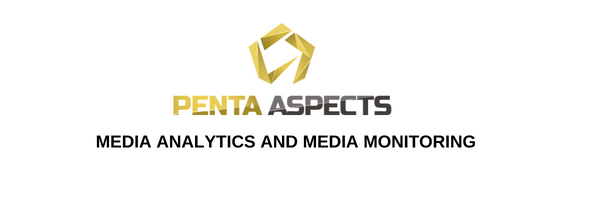

|
Bulgaria
|
|  | |
|
BNB Exchange Rates
(11.12.2025) |
|---|
| |
EUR |
|
1.95583 |
|
| GBP |
|
2.23754 |
| USD |
|
1.68113 |
| CHF |
|
2.09046 |
| EUR/USD |
|
1.1634* |
|
ECB exchange rate |
|
Basic Interest Rate |
| |
as of 01.12 |
|
1.81% |
|
|
|
 |
Financial news |
 |
Some of the important industrial activities in Bulgaria reported a large double-digit decline in October compared to last year, according to NSI data. The trend of worsening climate in industry is deepening. In the repair and installation of machinery and equipment, we have a collapse of as much as 24.8% compared to October 2024, in food products - by 22.4%, and in the production of textile products without clothing it is 20.9%. The overall decline in the processing industry is 6.5%, while that in the mining industry is as much as 10.7%, and in the production and distribution of electricity, heat and gas we are talking about 10.9%. The furniture industry is growing by 27.1%, the production of cars, trailers and semi-trailers by 13%, the production of products from other non-metallic mineral raw materials by 11.8% and the tobacco industry by 11.2%. In general, the calendar-adjusted index of industrial production falls by 7.7%. On a monthly basis, there is also a decline - by 2.1%. Agriculture in our country is in poor condition, and this makes the food industry uncompetitive, while at the same time, disrupted supply chains and expensive energy limit the work of factories in other areas, thus reducing their needs for electricity and gas. If we take 2021 as a benchmark in terms of the industrial production index, then October 2025 has a result that is only 97.9% of that of 4 years ago, when we were still living in a pandemic. In October 2016, the calendar-adjusted industrial production index was comparable to the current one. In the mining industry, the situation is even worse - in October this year we are at 85.5% of the 2021 levels, and in coal mining the decline is as much as two-thirds. The manufacturing industry has an industrial production index that is 8 points above the 2021 base year, but this is mainly due to large jumps in some activities such as the manufacture of metal products without machinery and equipment (almost 84% above the 2021 average), that of pharmaceuticals and products, computers, electronics and optical products or manufacturing not elsewhere classified. The chemical industry is at 85% of its 2021 level, the garment industry at 78%. A comparison with October 2005, when EU membership was still in the future, shows a quite different structure of the industry. Production in the extractive industry is one third above that in 2021, and that of tobacco and clothing is respectively triple and double compared to the reference year. The Bulgarian IT sector continues to grow, but at an increasingly slower pace. In 2024, the revenues of companies whose activity is mainly software writing increased by 11.5% to 10 billion leva, compared to last year's forecast of 12.4%, according to the annual report "Barometer", which is prepared by the Bulgarian Association of Software Companies (BASCOM). The sector remains strongly export-oriented - 87% of revenues come from exports, and the total volume of the industry is expected to reach 11 billion leva in 2025. According to data from BASCOM, about 6,100 companies operate in the sector, with 300 new companies and 1,197 new jobs created in 2024. The total number of employees in the industry exceeds 60,000 people. The association notes that the wage gap between Sofia and the country is shrinking to around 5-7 percent, and companies in the sector pay about three times more social security contributions than the national average. The outlook for the period until 2027 indicates reaching over 13 billion leva in revenue, more than 3 billion leva in taxes and social security contributions, and 65,000 jobs. According to BASCOM, this confirms the moderate but sustainable growth of the sector. Source: Duma
 |
Companies |
 |
The Freedom Monument, better known as the Shipka Monument on Mount Saint Nicholas, will be restored by the Building Comfort company. There were six candidates in the public tender for the restoration and conservation of the facades and interior of the Shipka Monument, but only the price proposal of the Tarnovo company is open. The client is the Shipka - Buzludzha National Park Museum. Building Comfort was selected to restore the site for 13.5 million leva, or about 500 thousand leva below the estimated value. The company has about 40 staff, of which 20 are workers, and over 10 million leva in revenue for 2024, with turnover falling from 45 million leva in 2023. The company was established in 2012, with its first owner being Ivan Epihov, replaced in 2014 by Borislav Atanasov. On October 6, 2023, Veneta Kostadinova was listed as a co-owner in the company with a 60% share. She is the wife of the late Kamen Kostadinov, a former MP and long-time member of the Central Operational Bureau of the Bulgarian People's Rights Party, a member of the Executive Committee of the Bulgarian Football Union. Over the years, Building Comfort has won public contracts in various parts of the country, but most of all in Veliko Tarnovo - for example, a tender for a new hospital building in Tarnovo for over 6 million leva, kindergartens and schools, etc. One of its largest contracts is from 2020 - for 56 million leva for the water supply system in Shumen as part of a merger with GP Group. Months ago, it became clear that the water supply system failed shortly after it was completed, the website "For the Truth" reported. In 2022, the Ministry of Interior conducted a search in the municipality of Pomorie in connection with a fishing port project. Building Comfort was one of the companies implementing the contract. Among its other larger public procurement contracts won are tenders by NRIC for a total of 1.5 million leva in a joint venture with another Turnovo company, "Jumbo 33", orders by "Irrigation Systems", a tender for the renovation of a Danube park and the construction of bicycle lanes in Vidin for 14.4 million leva, and one of its latest contracts won - from June 2025, is under a contract for the renovation of buildings in Veliko Tarnovo for 2.8 million leva. The company has experience in cultural monuments, as it was the leading company in the consortium that also renovated the synagogue in Vidin. At that time, the company won with a convincing result over its competitors during the tender. Out of three candidates in the tender, only one gave a lower price - "Kamo Build Group", but it had a rather low technical assessment, which is why it came in last place. "Kamo Build Group" worked on the restoration of the Episcopal Basilica in Plovdiv. In the competition for the restoration of the Shipka monument, Building Comfort initially had five competitors, but all of them were eliminated during the consideration of their technical proposals. Veliko Tarnovo's Hemus 2000, which is a partner of Biad-S in the Shipka Restoration association, for example, does not meet the requirement to have a turnover of 10 million leva in the last three financial years in the field covered by the order. The Vertical Limk association also does not meet the turnover requirement and was allowed to consider a technical proposal. It includes the companies Vertical 90 and Limk. PSP was eliminated because it submitted a declaration of conformity for the dolomite stone, which will be used for the facade, in English. The commission also notes that there are gaps in the linear schedule for Geostroy. The association "Restorers of the Freedom Monument "Shipka" with participants "Schloss" and "Bigla-III" has submitted a declaration that they will deliver dolomite for installation in the monument from the Zemen deposit, but the commission found that not enough large stone blocks of the right color are being mined there, and therefore the consortium was removed. The monument has not been repaired since 1982, although it is more than 90 years old and is exposed to extreme weather conditions - snow and cold in winter and rain and thunderstorms in summer. The cost of the repair is estimated at 18 million leva including VAT in 2022. However, it may swell by the time the repair begins, which is planned for 2026. The money must be provided by a decree of the Council of Ministers, when a contract is signed. The names of Veneta and Kamen Kostadinova also emerged around a story about a disinfectant manufacturer in Veliko Tarnovo since 2020. Veneta Kostadinova's company "Geb Projects" entered the ownership of the HMI enterprise. At that time, there were suspicions of political and economic pressure for the change in ownership among local political and business circles, but no specific evidence was presented. Greek carbon storage company EnEarth has entered into negotiations with Bulgarian cement producer Heidelberg Materials Devnya for an exclusive agreement to transport and store carbon dioxide at its Devnya plant. The project is part of the wider Carbon Capture, Utilization and Storage (CCUS) initiative launched by its German parent company Heidelberg Materials. The aim is to capture, transport and permanently store up to 800,000 tonnes of carbon dioxide from cement production in Devnya annually, EnEarth said. The project has already secured €190 million in EU funding, of which €38 million is earmarked for the construction of the storage facility itself. EnEarth is part of UK-based hydrocarbon exploration and production company Energean. The company aims to develop so-called “green hubs” by transforming depleted oil and gas fields into sustainable carbon storage facilities. Heidelberg Materials is one of the world's leading manufacturers of building materials with operations in over 50 countries and more than 3,000 production sites. In Bulgaria, the company operates through the cement plant in Devnya, as well as two cement terminals and a concrete batching plant in Varna. Source: bTV
At a secret auction, the municipality of Yambol will sell seven municipal plots of land in the Hristo Smirnenski residential complex, located in the area of the former infantry barracks in the city. The properties are located near the roundabout of Targovska Street and Krairechen Boulevard, facing the main road, local authorities say. Six of them are intended for residential construction or complex public services, with an area of 1,380 to 1,727 sq m. m. The starting auction prices, prepared by a licensed appraiser and approved by the Municipal Council, are between 733,800 and 911,100 leva (375,185.98 and 465,838.03 euros). The seventh plot has an area of 5,573 sq m and is designated for complex public services. The starting bid price for it is 2,543,800 leva (1,300,624.29 euros). Three of the properties contain unusable buildings from former military units. The municipality is committed to removing them after the sale of the land. Source: Darik radio
The international fintech company UEB3 Ventures, licensed and specialized in digital asset management, opens its fourth international office – this time in Sofia. After a strategic presence in Dubai and Asia, Bulgaria was chosen as a natural next step in the company’s ambition to establish itself as a leading force in Web3 trading in Central and Eastern Europe. With the new office in Sofia and the upcoming one in Frankfurt – a key financial hub for the European Union, UEB3 Ventures reinforces its commitment to European markets and demonstrates its readiness to provide conservative, secure and transparent digital asset management in a dynamic environment. In just 11 months, the company has attracted over 2,200 investors and reached $24 million in Assets Under Management, which confirms the trust in its model and strategic focus on sustainable growth and institutional standards. UEB3 Ventures was founded by Viktor Uzunov, former vice president of the investment bank Jefferies. UEB3 Ventures chooses to work with expertise instead of relying on trading bots and algorithmic trading. Its model is based on processes, an experienced team, and strict risk management. Thus, the company positions itself as a preferred partner for investors seeking long-term stability and transparency in the management of digital assets. For decades, a landslide on a section about 300 meters long on the first-class road between Botevgrad and Sofia has been causing problems. It is in the land of the village of Vrachesh near the Hemus highway. Now the Road Infrastructure Agency (API) has selected a contractor in the tender for its reinforcement - a merger between two companies from the GBS holding, and has only opened their price offer. Otherwise, there were five participants in the tender in total. The contract is yet to be signed. In addition to the winner, the candidates also included a merger between Geostroy and Patstroy - 92 from the Geotechmin group, Groma Hold, Valmex and the unknown to the construction industry Food and Fun Mix Center. These four candidates were eliminated at the stage of technical offers, so subsequently only the price offer of GBS - Infrastructure Construction and GBS Global Construction was opened. It is 18.997 million leva at an estimated value of 19.5 million leva excluding VAT. The term for the implementation of the current order is 470 days, or nearly 16 months. The company is implementing some landmark projects such as the repair of the capital's "Filip Kutev" street from "Srebarna" street to "Simeonovsko Shosse" blvd., the overpass at "Bakerena Fabrika" also in Sofia, a section of the "Europe" highway between Slivnitsa and the capital, and the modernization of the Third Aviation Base "Graf Ignatievo". The second company - "GBS Global Construction" - has been part of the holding more recently. It was registered in 2020 under the name "Global Construction" and with a paid-in capital of 100 thousand leva. Until 2023, the official owner was Miroslav Mironov, and then Kalin and Kamen Peshov, who are the heads of the holding, were listed as the actual owners of Glavbolgarstroy International. The same year, the company changed its name to GBS Global Construction. The company was part of the AM Struma Tunnel 2018 consortium, in which, together with GP Group and Via Plan, it completed the construction of the Zheleznitsa tunnel. At its meeting of 9.12.2025, the FSC decided: 1. Approves Petar Dochev as procurator of the investment intermediary "Ever Financial" AD. 6. Enters an issue of shares issued by "Future Capital Holding" AD, Sofia, in the register of public companies and other issuers of securities, for the purpose of trading on a regulated market. The issue is in the amount of 1,167,844 ordinary, registered, dematerialized, freely transferable shares with voting rights, with a nominal value of 1 leva each, with ISIN code BG11VEPLAT12. 7. Enters an issue of shares issued by "Texim Bank" AD, Sofia, in the register of public companies and other issuers of securities, for the purpose of trading on a regulated market. The issue is in the amount of 6,999,991 ordinary, registered, dematerialized, freely transferable shares with voting rights, with a nominal value of 1 lev, with ISIN code BG1100001921. 8. Initiates administrative proceedings for the issuance of an individual administrative act for the deletion of insurance broker "VIA NOTA" OOD from the register of insurance brokers. 9. Sends a notification to the competent authority of the Republic of Greece in connection with the intention of insurance agent "Balkan General Risks Global" OOD to carry out insurance brokerage activities under the conditions of freedom to provide services on the territory of the respective country. Source: Company information
|
|
Investments
|
|  |
|
|
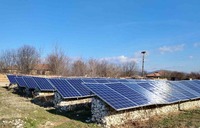 |
 Municipalities: Chirpan, Bratya Daskalovi, Brezovo, Panagyurishte, and Parvomay Municipalities: Chirpan, Bratya Daskalovi, Brezovo, Panagyurishte, and Parvomay
Total area: about 40 decares of owned land in the regions of Plovdiv and Stara Zagora, 29 installed PV plants, each with a capacity of 29,700 Wp, 3 additional properties with development potential
|
 |
 Sofia Center Sofia Center
500 sq.m, functionally distributed between open space area, private offices, meeting room, server room, and restroom
|
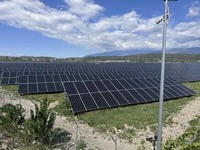 |
 Blagoevgrad Blagoevgrad
111 decares of owned land (in two adjacent plots of 55 decares each) at the entrance of the city from "Struma" highway
|
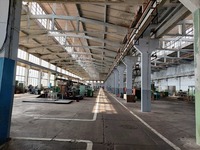 |
 Pleven Region Pleven Region
Total area 34 decares, 2 halls (total area 8510 sq.m) and admin. building (3 floors, GFA 2217 sq.m), operating business, good location, cranes for loading and unloading (lifting capacity 2x1 t, 3, 5, and 12 t), electrical connection - 110/20 kV with two underground 20 kV power lines, substation
|
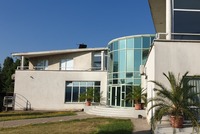 |
 Sofia Sofia
Operating enterprise with excellent financial results, 14.6 decares total area with excellent location, 3 halls (total area 1600 sq.m and height 11 m), cranes for loading and unloading activities (lifting capacity 13 t), admin. building (360 sq.m), warehouses and active store
|
|
|
Bulgarian Industrial Association
|
|  |
|
World
|
|  |
 |
Europe |
 |
Traders are betting on a more than 50% chance that the European Central Bank (ECB) will raise interest rates in 2026 after hawkish comments this week by Executive Board member Isabelle Schnabel weighed on market sentiment, Bloomberg reports. Investors now expect the ECB to tighten monetary policy by 13 basis points by December next year. That is a reversal from expectations of a rate cut last week before Schnabel said she would be comfortable if the ECB’s next move was aimed at raising borrowing costs. The ECB’s last meeting of the year is on December 18, and observers do not expect a change in monetary policy. Traders are also looking ahead to the U.S. Federal Reserve’s interest rate decision later on Wednesday, with the central bank widely expected to cut borrowing costs for the third time this year. However, concerns about stubborn inflation could prevent Chairman Jerome Powell from signaling additional cuts early next year.
 |
America |
 |
World trade will exceed $35 trillion in 2025 for the first time, the United Nations Trade and Development Agency said, as quoted by Reuters. That's a 7 percent increase year-on-year, adding about $2.2 trillion to global trade. That comes despite geopolitical tensions, rising government spending around the world and uneven demand that has weighed on growth in many advanced economies in recent months. East Asia was the strongest performer, with exports growing 9 percent in the past four quarters and intra-regional trade growing 10 percent. China and South Korea led the region's growth, while South-South trade - trade between developing economies - expanded by about 8 percent, faster than the global average. Africa has seen strong import growth of 10% over the past four quarters, with exports increasing by 6% over the same period. The continent’s performance reflects growing regional integration and improved logistics capabilities. South America has also shown resilience, with intra-regional trade increasing by 7% over the four quarters. Manufacturing, particularly electronics, remained the main driver of growth, with the sector growing by 14% over the past year, driven by rising demand for AI-related components. The automotive sector, however, struggled, with trade falling by 4% over the four quarters amid uncertainty over tariffs and supply chain disruptions. Trade in services is forecast to add around $750 billion to global volume, growing by almost 9%. India and China recorded some of the strongest growth among developing countries, with services exports increasing by 10% and 17% respectively in the second quarter of 2025. India’s growth was driven mainly by trade services related to finance, telecommunications, computers and information technology, while China’s increase was driven by a 50% jump in travel and tourism exports. Despite a record year, the UN agency expects weaker growth in 2026 as slowing global economic activity, rising debt burdens, higher trade costs and ongoing uncertainty weigh on performance. Between July and September 2025, world trade grew by 2.5% compared to the previous quarter, but growth is expected to slow to just 0.5% for goods and 2% for services in the final quarter. There has been a key shift in price dynamics. After two quarters in which the value of trade rose partly due to higher prices, costs are now expected to fall, meaning the year-end increase is due to higher volumes rather than inflation. Trade imbalances remain high, with China's goods surplus narrowing in the third quarter but still about $30 billion higher than a year earlier.
 |
Asia |
 |
Copper hit a record high after China declared domestic growth a top economic priority for next year amid a massive build-up of inventories in the United States, world agencies reported. The industrial metal jumped 1.3% to $11,771 a tonne, surpassing a record set during the previous session. The latest jump came after Beijing said on Monday it would implement a “more proactive” fiscal approach and maintain “moderately loose” monetary policy for the world’s second-largest economy. Trade data from China was also favorable, with exports rebounding last month and exceeding forecasts, lifting the country’s trade surplus above $1 trillion for the first time in history. The price of copper, a metal key to electrification and the energy transition, has risen more than 30% this year on the London Metal Exchange. New demand, spurred by data centers and electric cars, has clashed with tight global supplies. Smelting capacity is growing faster than mines can supply raw materials. A series of mine outages have worsened the shortage. The growth has accelerated in recent weeks on concerns that the metal is being shipped to the United States in anticipation of tariffs that President Donald Trump plans to impose next year. That has depleted stocks and sent premiums elsewhere to unprecedented heights, while also sending futures contracts in New York surging above those on the LME. Global refined copper supplies could run a deficit of 450,000 tonnes in 2026, partly due to a build-up of American stocks, analysts at Chinese brokerage Citic Securities Co said. Prices need to average more than $12,000 a tonne next year to attract the necessary investment in new mining capacity and ensure sufficient supply in the medium and long term, Citic analysts led by Ao Chong said. Bulgaria is also a factor in the global supply chain. Our country produces about 14% of Europe's copper and thousands are employed in the extraction and processing of copper in our country. The largest company in the sector globally - Aurubis, has a huge copper mining plant in Pirdop. It is investing hundreds of millions of euros in modernization and increasing its capacity - a clear sign that the expectations are that demand will not subside anytime soon. 
|
|
Indexes of Stock Exchanges
10.12.2025 |
| Dow Jones Industrial |
| 47 861.30 |
(-246.00) |
| Nasdaq Composite |
| 23 654.20 |
(27.64) |
Commodity exchanges
10.12.2025 |
|---|
| |
Commodity |
Price |
|
| Light crude ($US/bbl.) | 58.24 |
| Heating oil ($US/gal.) | 2.2617 |
| Natural gas ($US/mmbtu) | 4.4102 |
| Unleaded gas ($US/gal.) | 1.7817 |
| Gold ($US/Troy Oz.) | 4 213.04 |
| Silver ($US/Troy Oz.) | 61.79 |
| Platinum ($US/Troy Oz.) | 1 660.41 |
| Hogs (cents/lb.) | 87.68 |
| Live cattle (cents/lb.) | 215.58 |
|
|
 |
The Oslekova house |
 |

The Oslekova house is in the town of Koprivshtitsa. It is one of the most important monuments of the Bulgarian Revival architecture. It was built in 1856 by the rich merchant Nencho Oslekov. Its construction is work of master-builders from the Smolyan School. The house is famous for its beautiful wall-paintings and wood-carvings. In the past the owner of the house was responsible for the collecting of the tax for the small farm animals. The cloths and the mantles of the Koprivshtitsa rebels for the April uprising were made in the large hall of the house. Because of his activity Nencho Osekov was seized after the defeat of the uprising and hung in Plovdiv in June 27, 1876. The Oslekova house became an ethnographic museum in 1956. A lot of objects, connected with the daily life of the old people from Koprivshtitsa, collections of women ornaments and fine laces, made of horse-hair are exhibited there.
Location
|
Archive
Business Industry Capital |
|

 Last Issue
Last Issue

 Subscribe NOW!
Subscribe NOW!

 Analyses
Analyses

 Discover Bulgaria
Discover Bulgaria
 Български
Български

 Archive
Archive
 Last Issue
Last Issue

 Subscribe NOW!
Subscribe NOW!

 Analyses
Analyses

 Discover Bulgaria
Discover Bulgaria
 Български
Български

 Archive
Archive